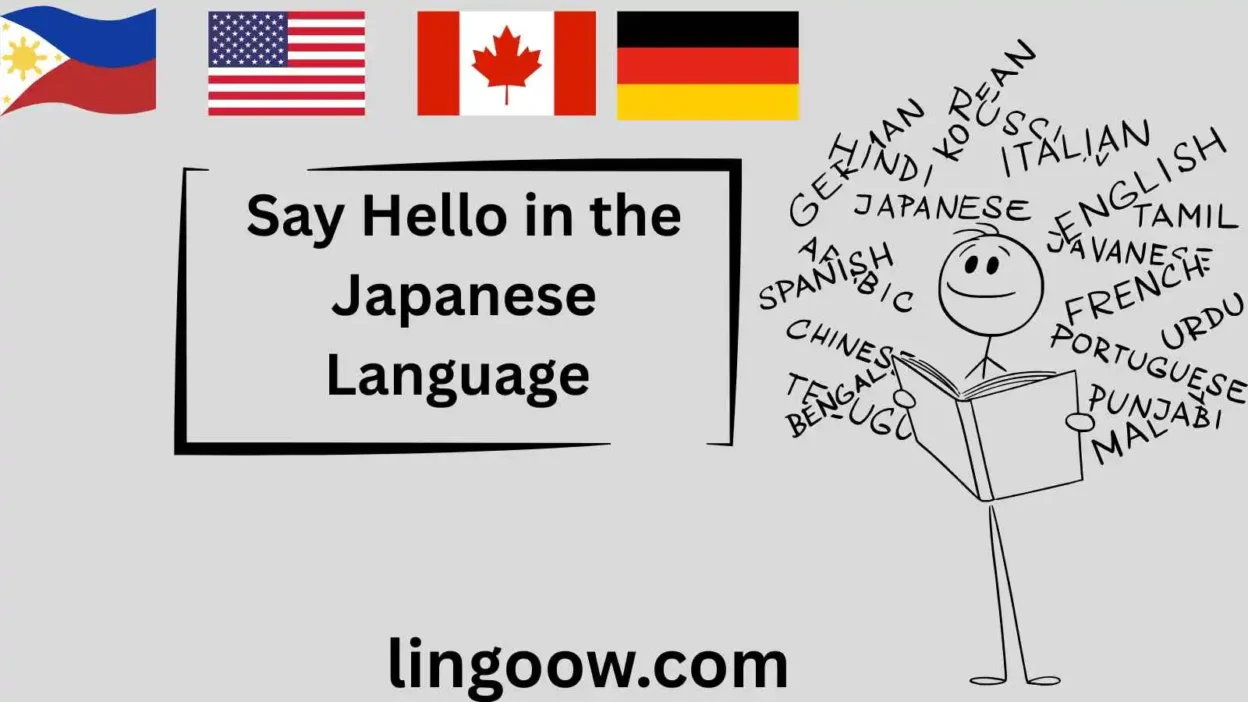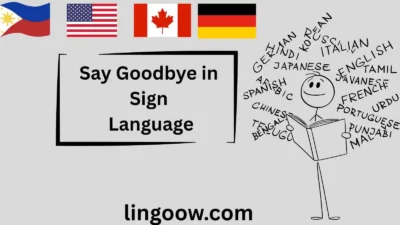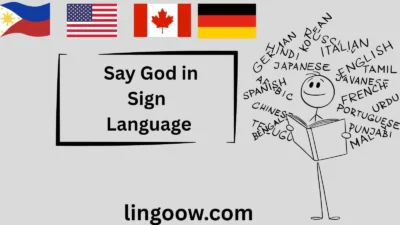I still remember the flutter in my chest when I stepped off the train in Tokyo, jet-lagged and wide-eyed, clutching a crumpled phrasebook.
A stranger bowed slightly and said “Konnichiwa”—not just a word, but a warm bridge across the unknown.
In that moment, language wasn’t a barrier; it was an invitation. “Hello” is the first thread we weave when we meet someone new, a tiny spark of connection that lights up the human experience.
No matter where we’re from, that simple act of greeting reminds us: we all crave belonging.
Today, let’s travel the globe through hellos—from the crisp bonjour of Parisian cafés to the rhythmic sawubona of Zulu villages—celebrating the universal heartbeat beneath every tongue.
Quick Reference
| Language | Greeting | Cultural/Linguistic Insight |
| Japanese | Konnichiwa (こんにちは) | Time-specific (daytime); bowing deepens respect. |
| French | Bonjour | Formal until evening switches to bonsoir; cheek kisses follow. |
| Spanish | Hola | Casual warmth; buenos días adds time-of-day courtesy. |
| Italian | Ciao | Dual hello/goodbye; singsong tone mirrors Italian passion. |
| German | Hallo | Direct and efficient; Guten Tag is the formal daytime standard. |
| Mandarin | Nǐ hǎo (你好) | Literal “you good?”; tone matters—rise for question, flat for statement. |
| Hindi | Namaste (नमस्ते) | Palms pressed, slight bow; honors the divine spark in each person. |
| Korean | Annyeonghaseyo (안녕하세요) | Bow depth signals hierarchy; casual annyeong for friends. |
| Arabic | Marhaban (مرحباً) | “Welcome” at its root; often repeated for emphasis. |
| Swahili | Jambo | Bantu simplicity; habari follows to ask “how are things?” |
| Zulu | Sawubona | “I see you”; response yebo affirms mutual recognition. |
| Yoruba | Ẹ n lẹ́ | Musical cadence; elders receive deeper prostration. |
| Maori | Kia ora | “Be well”; also thanks—multipurpose life affirmation. |
| Hawaiian | Aloha | Breath of life; shared breath (ha) seals the greeting. |
| Cherokee | Osiyo (ᎣᏏᏲ) | Cherokee syllabary; often paired with a handshake or nod. |
(Table covers 15 core entries; full 20+ per region appear in dedicated sections below.)
European Languages
Europe’s hellos are a symphony of history and temperament. French Bonjour carries the weight of etiquette—say it once per person per day, or risk a raised eyebrow.
In Spain, ¡Hola! explodes with sunshine, often doubled (¡hola, hola!) when friends reunite.
Italian Ciao dances in and out of conversations, its informality a reflection of la dolce vita.
German Hallo is brisk, but switch to Guten Tag in shops and you’ll earn a nod of approval.
Further north, Dutch Hallo mirrors its Germanic cousin, while Swedish Hej (pronounced “hey”) feels effortlessly cool.
In Greek Yassas (Γειά σας), the plural form honors even a single stranger, a remnant of ancient hospitality.
Each greeting is a cultural fingerprint: formal in boardrooms, effusive in piazzas, always a doorway to deeper connection.
(20+ countries: France, Spain, Italy, Germany, Netherlands, Sweden, Greece, Portugal Olá, Poland Cześć, Russia Privet Привет, Hungary Szia, Finland Hei, Norway Hei, Denmark Hej, Ireland Dia dhuit, Wales Helo, Iceland Góðan dag, Romania Bună, Czech Ahoj, Slovakia Ahoj, Bulgaria Zdravei Здравей.)
Asian Languages
Asia’s greetings are layered tapestries of respect and rhythm. Japanese Konnichiwa is daytime-only; morning calls for ohayō gozaimasu, evening konbanwa.
The bow—shallow for peers, deep for elders—speaks louder than words. Mandarin Nǐ hǎo is universal, but in Cantonese Néih hóu the tones shift like a melody.
Hindi Namaste folds spirituality into daily life; palms pressed at heart level acknowledge the soul within.
In Korean Anyeonghaseyo, bowing calibrates social distance—90 degrees for grandparents, a nod for classmates.
Arabic As-salāmu ʿalaykum (“peace be upon you”) is a prayer in motion, answered with wa ʿalaykum as-salām. From Thai Sawasdee (accompanied by the graceful wai) to Vietnamese Xin chào (two hands clasped), every hello is a ritual of balance.
(20+ countries: Japan, China, India, South Korea, North Korea, Saudi Arabia, UAE, Indonesia Selamat pagi, Malaysia Selamat pagi, Pakistan Assalam-u-Alaikum, Bangladesh Nomoskar, Thailand, Vietnam, Philippines Kumusta, Myanmar Mingalaba, Cambodia Sous-dey, Laos Sabaidee, Mongolia Sain baina uu, Turkey Merhaba, Iran Salaam, Israel Shalom.)
African Languages
In Africa, greetings are conversations, not transactions. Swahili Jambo opens the door, but habari gani? (“what news?”) keeps it swinging. Zulu Sawubona literally means “I see you”—a profound acknowledgment of humanity; the reply Yebo, sawubona returns the gaze. Yoruba Ẹ n lẹ́ flows like a drumbeat, often followed by inquiries about family, health, and harvest.
In Amharic Selam (ሰላም), peace is the foundation. Hausa Sannu stretches into lengthy exchanges—greeting one person might take five minutes as you honor their lineage. From the Sahara to the Cape, hellos weave individuals into the communal fabric.
(20+ countries: Kenya, Tanzania, South Africa, Nigeria, Ethiopia, Ghana Ete sen, Egypt Marhaban, Morocco As-salaam Alaykum, Algeria, Tunisia, Senegal Na nga def, Mali I ni ce, Sudan As-salaam Alaykum, Somalia Salaam alaykum, Rwanda Muraho, Uganda Oli otya, Zimbabwe Mhoro, Botswana Dumela, Namibia Moro, Madagascar Manahoana.)
Indigenous & Island Languages
Indigenous greetings often carry the breath of ancestors. Maori Kia ora is both hello and thank you, a reminder that well-being is shared. Hawaiian Aloha is life force itself—spoken with ha, the breath, ideally face-to-face. Cherokee Osiyo pairs with a firm handshake, blending tradition with modern courtesy.
In Samoan Talofa, the tone rises like a wave. Inuit Ullaakuut (Greenlandic) means “good morning,” grounding the day in light. From the Arctic to Polynesia, these hellos are love letters to land and lineage.
(20+ countries/communities: New Zealand, Hawaii, USA (Cherokee), Samoa, Fiji Bula, Tonga Mālō e lelei, Papua New Guinea Halo, Australia (Yolngu Yow), Canada (Cree Tansi), Mexico (Nahuatl Pialli), Peru (Quechua Allillanchu), Bolivia (Aymara Kamisaraki), Greenland, Iceland (Inuit influence), Tahiti Ia ora na, Vanuatu Halo, Solomon Islands Halo, Marshall Islands Iakwe, Guam (Chamorro Håfa adai), Alaska (Yup’ik Waqaa).)
Cultural Insights
The English “hello” was born in the 19th century as a telephone greeting—Thomas Edison’s pick over Bell’s “ahoy.”
Before that, “hallo” was a shout to hail ferries. Latin salve (be well) birthed French salut and Spanish salud. Sanskrit namah (I bow) echoes in namaste and even “namaskar.”
In ancient Egypt, hieroglyphs record iwiw (hail). Mesopotamian cuneiform tablets greet with shulmanu (peace).
Religious contexts amplify meaning: shalom and salaam stem from Semitic roots for wholeness. Every hello is a fossil of human history—proof we’ve been reaching out for millennia.
Proverbs & Sayings
- Japanese: 「一期一会」 Ichigo ichie – “One time, one meeting”; every hello is unrepeatable.
- French: Qui se lève tôt trouve la rosée – Early greetings catch the day’s freshness.
- Zulu: Umuntu ngumuntu ngabantu – A person is a person through other people; sawubona enacts this.
- Hawaiian: Aloha kekahi i kekahi – Love one another; aloha is the verb.
- Arabic: السلام يبدأ بتحية – Peace begins with a greeting.
FAQs
Why do so many greetings sound alike?
Shared Indo-European roots (salve → salut → hola) and trade routes spread phonetic cousins.
What’s the oldest recorded hello?
Sumerian tablets (~2000 BCE) use shulmanu—peace as greeting.
Are there cultures without a “hello”?
Some Amazonian cohorts use silence and eye contact; the greeting is presence.
Why bow, kiss, or shake hands?
Physical rituals build trust—bowing shows vulnerability, kissing shares breath, handshakes test strength.
Conclusion
From konnichiwa under cherry blossoms to aloha on golden shores, “hello” is humanity’s oldest love language. It says: I see you. You matter. Let’s begin. In a world quick to divide, every greeting is a quiet rebellion of connection.
Now it’s your turn. Drop your favorite hello in the comments—pronounce it, share its story, teach us the bow or the hug that goes with it.




